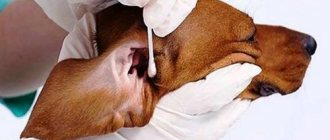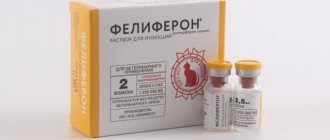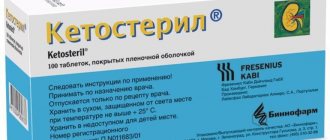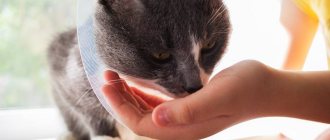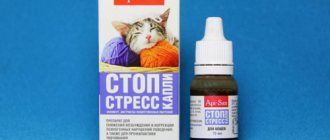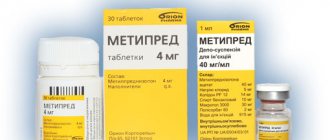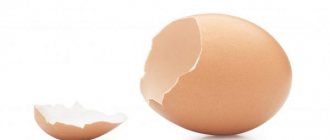pharmachologic effect
The drug belongs to the group of antibacterial agents with a combined composition. The pharmacological effect is due to the properties of the substances on the basis of which Diarkan was developed. Ratania extract coats the walls of the stomach and intestines, preventing the penetration of toxins into the blood. Thanks to this, it is possible to prevent the spread of infection throughout the body. Benzonafthol effectively disinfects the gastrointestinal tract. The substance is excreted completely naturally (with urine and stool). Sulfaguanidine - has an active effect against salmonella, E. coli and other dangerous pathogens. The principle of action is to disrupt the formation of folic, dihydrofolic acids and other compounds necessary for the development of microorganisms. Once in the body, the active component does not disintegrate and is excreted unchanged along with the stool.
Analogues of Diarkan
The drug for intestinal infection Diarcan has positive reviews regarding its effectiveness.
Diarcan is used in veterinary medicine for the treatment of gastrointestinal diseases of infectious origin.
However, if there are contraindications or side effects, it may be necessary to replace the product with an analogue. It is also possible to search for a drug with similar pharmacological effects at a lower cost.
Analogues recommended by veterinarians:
- Exekan;
- Pillkan;
- Polyverkan.
Replacement of the drug Diarcan prescribed by a specialist is carried out with the consent of the doctor.
You must first read the instructions to avoid adverse reactions and become familiar with the features of use.
Be sure to read:
Metronidazole for cats: description, what it is needed for, instructions for use, dosage
Instructions for use
Before using Diarkan for cats, the instructions are studied first, since any violation of the instructions reduces the effectiveness of treatment. The drug is taken twice a day at an interval of 12 hours. If a severe form of the disease is diagnosed, a regimen of using the medication three times a day with a break of at least 8 hours is recommended. The duration of the course is selected individually, but not less than 3-5 days. It does not matter how the drug is given to the cat: whether it is a whole fragment of a briquette or crushed powder mixed into the food. As an option, mix the product into the drinking bowl. If a medication was missed during treatment, the next dose cannot be doubled. It is worth continuing therapy according to the prescribed regimen.
.
Indications for prescribing the drug
Diarcan is used primarily for bacterial diarrhea. They are characterized by an unpleasant fetid odor and a yellowish-green color. The components that make up Diarkan can cope with:
- coli;
- salmonella;
- Shigella
Most diarrhea in cats is caused by these microbes. You can give the drug to a pet whose source of diarrhea is unknown. Often, a bacterial infection joins a viral one. Therefore, with the permission of a veterinarian, you can give Diarcan to a cat with viral diarrhea.
Many dog owners are interested in the question of whether it is possible to give Diarcan to a cat for worms. Sulfaguanidine, the main active ingredient in the sugar cube, only acts against certain bacteria. He is unable to destroy helminths. Therefore, Diarcan does not help against worms in cats.
Dosage
Diarcan is given to animals in the recommended doses indicated in the instructions. The one-time norm is not calculated for each kilogram of weight, but according to average data: cats weighing 1-5 kg - half a briquette; large cats whose body weight is 5-15 kg - 1 cube. It is prohibited to exceed the recommended dosage of the medicine; otherwise, the risk of an allergic reaction, vomiting, and diarrhea increases. Alarming symptoms can be eliminated by gastric lavage and anti-allergenic drugs.
DIARKAN sugar cubes for diarrhea for dogs and cats
Diarcan is an anti-diarrhea drug for dogs and cats in the form of sugar cubes.
Key Features:
- Suitable for medicinal purposes against diarrhea in pets.
- Restores water-salt and alkaline balance.
- Used as a barrier against the occurrence of harmful bacteria and toxins in the body.
Instructions for the use of the drug Diarcan for the treatment of enteritis of bacterial etiology in dogs and cats (developer organization - France).
I.
General information.
Trade name of the drug: Diarkan.
International nonproprietary name: sulfaguanidine, benzonaphthol, ratania.
Dosage form: briquette for oral administration.
Diarcan as active ingredients in 1 briquette contains: sulfaguanidine - 300 mg, benzonaphthol - 100 mg and ratania extract - 50 mg, and sucrose as an excipient - up to 8 g.
In appearance, Diarkan is a sugar cube with a light pink dividing groove in the middle.
Diarkan is produced packaged in 8 briquettes in hermetically sealed plastic blisters, packed in cardboard boxes along with instructions for use.
Store the medicinal product in the manufacturer's sealed packaging in a dry place, protected from light, at a temperature from 0 C to 25 C.
The shelf life of Diarkan, subject to storage conditions, is 5 years from the date of production. The medicinal product must not be used after the expiration date.
Diarcan should be stored out of the reach of children.
Unused drug is disposed of in accordance with legal requirements.
II.
Pharmacological properties.
Diarcan belongs to the combined antibacterial drugs.
Sulfaguanidine, which is part of the drug, has antibacterial activity against E. coli and salmonella, like other sulfonamides, is a competitive antagonist of para-aminobenzoic acid, prevents the formation of tetrahydrofolic acid, which in turn disrupts the formation of purine and pyrimidine bases.
When administered orally, sulfaguanidine is practically not absorbed, creating high bacteriostatic concentrations in the intestine.
It is excreted from the body mainly unchanged in feces.
Benzonaphthol breaks down in the intestines into benzoic acid and 3-naphthol, which have an antiseptic effect, and are excreted in urine and feces.
Due to its physicochemical properties, the extract of the medicinal plant ratania has an enveloping effect, forms a film on the intestinal mucosa, which helps restore the water-salt balance in the intestines, prevents the penetration of toxins of pathogenic bacteria and the transition of enteritis to a hemorrhagic form.
In terms of the degree of impact on the body, Diarcan is classified as a low-hazard substance (hazard class 4 according to GOST 12.1.007-76).
III.
Application procedure.
Diarcan is used in dogs and cats for the treatment of enteritis of bacterial etiology caused by microorganisms sensitive to sulfaguanidine and benzonaphthol.
Diarcan is contraindicated for use in cases of severe renal and liver dysfunction, urolithiasis, pregnancy, hypersensitivity to sulfonamide drugs, as well as puppies and kittens during the suckling period and weighing less than 1 kg.
Diarcan is prescribed to animals 2 times a day with an interval of 12 hours, in severe cases of the disease - 3 times a day with an interval of 8 hours for 3-5 days in the following doses:
- cats and dwarf dogs (1-5 kg) – 1/2 cube
- small dogs (5-15 kg) – 1 cube
- medium dogs (15-30 kg) – 11/2 cubes
- large dogs (30 kg and more) – 2 cubes
A sugar cube is added to animal feed or drinking water; dogs are fed from the owner’s hand. To prevent crystalluria during the period of drug use, abundant watering is recommended; for this, the animal should be provided with free access to water.
In case of an overdose of Diarcan, symptoms of dysfunction of the gastrointestinal tract (vomiting, diarrhea) may be observed. In this case, gastric lavage and symptomatic treatment are recommended.
No specific effects of the drug upon its first use and discontinuation were identified.
If one or more doses of the drug are missed, treatment must be resumed as soon as possible in the prescribed doses, according to the same regimen.
As a rule, there are no side effects or complications when using Diarcan in accordance with these instructions.
Some animals may experience crystalluria, vomiting, and allergic reactions in the form of urticaria or dermatitis. In this case, the use of the drug is stopped and the animal is prescribed antihistamines and symptomatic therapy.
The combined use of Diarkan with drugs that increase the acidity of urine (ascorbic acid, hexamethylenetetramine) due to the high likelihood of developing crystalluria, drugs with a high degree of binding to serum proteins (NSAIDs, coumaric anticoagulants, definin, sulfonylurea derivatives), due to the possible increasing their toxicity.
Diarcan is not intended for use in productive animals.
IV.
Personal prevention measures.
When working with Diarcan, you should follow the general rules of personal hygiene and safety precautions provided for when working with medicines.
People with hypersensitivity to the components of Diarkan should avoid direct contact with the drug.
If allergic reactions occur or if the drug accidentally enters the human body, you should immediately contact a medical facility (bring with you the instructions for use of the drug or the label).
Empty drug containers must not be used for household purposes; they must be disposed of with household waste.
Country of origin: Russia.
Information about the composition and ingredients, color scheme, technical and other characteristics, country of origin, appearance and delivery package of the product is for reference only and is based on the latest information available at the time of publication. Delivery of this product is carried out to all regions of the Russian Federation.
Contraindications and precautions
Before you start treating your cat, you need to clarify what contraindications have been established by the developers of the drug. It is prohibited to use the cubes in animals that have been diagnosed with urolithiasis or have kidney or liver disorders. Restrictions also apply to pregnant cats and kittens under 1 month of age. You may need to consult a specialist if your pet has diabetes. The problem is that the briquettes contain a large percentage of sucrose. During the studies, rare cases of an allergic reaction after taking the drug were recorded. This is due to the hypersensitivity of the animal body to sulfonamide substances. If such a feature is identified in a pet, you should refuse to use Diarkan. If allergy symptoms are detected, which appear more often with an overdose in the form of loose stools, urticaria, vomiting, you should interrupt the treatment course and consult a veterinarian to select a suitable remedy.
Important! You cannot combine taking Diarcan with vitamin C, as the risk of developing crystallurgy (the process of forming kidney stones) increases.
The drug contains low-hazard substances, but safety precautions must be observed when using it. It is prohibited to increase the dose prescribed by the doctor or intend to reduce it. Use Diarcan and non-steroidal anti-inflammatory drugs, as well as blood thinners, simultaneously in therapy. It is better to give the cube to an animal while wearing rubber gloves to prevent contact with sulfonamides. The substance can cause allergies in humans. The animal must have unhindered access to water throughout the therapy. Packaging and blisters should be disposed of after emptying.
If a doctor prescribes a dose of less than 1 briquette, it is worth considering that the remaining portion must be used within 3 days. After this period, the medicine loses its healing properties.
Advantages and disadvantages
The availability of the drug for any pet owner is its undoubted advantage.
The advantages of "Diarkan" include:
- affordable price;
- high efficiency and speed of action;
- the ability not only to eliminate accompanying symptoms, but also the direct cause of the disease;
- ease of use;
- minimum list of restrictions;
- rare occurrence of side effects.
The antibacterial drug is practically not absorbed into the cat’s blood, therefore, the animals tolerate the therapeutic course well. In exceptional cases, while taking Diarcan, vomiting or an allergy may occur, but then you will need to stop therapy and consult a veterinarian. The disadvantages of the antibiotic include the inability to use without a veterinarian's prescription, as well as incompatibility with many medications.
Storage conditions
In sealed packaging, the product retains its properties for up to 5 years from the date of production. After opening the blister, the cube must be used within 72 hours. Diarkan should be kept in a dark closet, inaccessible to animals and children. One of the important storage conditions is compliance with the temperature regime (5-25°C). Diarkan is popular among veterinarians and cat breeders due to its convenient form of application and sweetish taste. The treatment process eliminates stressful situations, and this is important for a quick recovery.
How to give medicine to a cat
Visit the profile section of our Medical Examination forum or leave your feedback in the comments below. More opinions means more useful information, it will be useful to someone. If there are good and interesting videos on the topic of the article, write and I will insert them into this publication.
general description
Diarcan is available in the form of pink or light brown sugar cubes. There is a groove in the middle of the briquette, thanks to which it can be divided into equal two parts. This is very convenient when using the medicine for puppies and small breeds. Briquettes are packaged in plastic blisters.
From the date of production, the medicine can be stored for 5 years, but provided that the packaging is closed and the storage location is chosen away from sunlight. The air temperature should be between 0 and 25°C.
Note! Sugar cubes have a sweet taste, so choose a storage location that is out of reach of children. This way they won’t have the opportunity to enjoy the dangerous sweetness.
What cat owners say about the drug - reviews
Lena. I met Diarkan when we got our first cat. In the spring, he was not home for days, then often returned with diarrhea. I gave Diarcan for a couple of days and everything went away; I really didn’t notice any side effects.
Alexei. They gave Diarcan to a cat when she had diarrhea. It’s not even clear where it caught it from – it doesn’t go further than the vestibule. But the veterinarian said that the soles of the shoes could have brought some kind of infection. It was on Saturday, and by Monday the cat was already running around healthy.
Zhanna. There is always Diarkan at home. We have three cats and all lead extremely active lifestyles. Even though everyone is vaccinated, diarrhea sometimes happens; everyone gets it in turn. It’s very convenient to give half a cube with water. The main thing is to make sure you drink.
